Tapes & Rules
Useful Blog Posts & Guides
Find out more about Tapes & Rules
Tapes and rules are essential measuring tools in woodworking, construction, and various DIY projects. They come in different types and materials, each designed for specific applications. Here’s an extended description of their features and uses:
Tape Measures: Tape measures are flexible measuring tools, typically made of a long strip of metal or fiberglass that retracts into a casing. They are usually marked in both imperial (inches) and metric (centimetres) units, making them versatile for different regions and preferences. Tape measures can vary in length, with common sizes ranging from 12 feet to 25 feet or more.
Features: Many tape measures come with a locking mechanism that allows you to hold the tape in place while measuring. Some even have magnetic tips for easier measurements on metal surfaces. The blade is often coated to enhance durability and reduce wear over time.
Uses: Tape measures are ideal for measuring longer distances, such as when laying out large projects or measuring spaces in a room. They are also handy for marking cuts on larger pieces of wood or for determining dimensions when building furniture.
Rules (Straight Edges): Rules, or straight edges, are rigid measuring tools, typically made from metal, wood, or plastic. They come in various lengths, commonly ranging from 12 inches to 48 inches or more. Unlike tape measures, rules provide a solid edge that can be used for drawing straight lines or as a guide for cutting.
Features: Rules often have marked measurements along one or both edges, making them easy to read. Metal rules are generally more durable and less prone to warping compared to wooden ones. Some rules also feature conversion tables or additional markings for specific applications.
Uses: Rules are particularly useful for precise measurements in woodworking, as they can be used to mark lines for cutting or to check the straightness of edges. They are also helpful for layout work, ensuring that cuts are made accurately.
Choosing the Right Tool: When selecting between a tape measure and a rule, consider the type of work you’ll be doing. For larger projects or when measuring distances that require flexibility, a tape measure is typically the better choice. For precision work, especially when marking or cutting, a straight rule may be more appropriate.
Maintenance: To maintain your tape measures and rules, keep them clean and free from debris. Avoid exposing them to excessive moisture to prevent rusting or warping, especially in the case of metal and wooden tools. Store them in a protective case or drawer when not in use to prolong their lifespan.
In summary, both tapes and rules are crucial tools in any woodworker's or DIY enthusiast's toolkit. Understanding their features and proper usage can significantly enhance your measuring accuracy and overall project quality.
Tapes & Rules FAQs
What is the difference between a tape measure and a ruler?
The primary difference between a tape measure and a ruler lies in their design and intended use.
A tape measure is a flexible tool that consists of a long, retractable blade marked with measurement units, typically in both inches and centimetres. This flexibility allows it to measure longer distances and conform to various shapes and surfaces, making it ideal for tasks such as measuring rooms, furniture, or any object that may not have straight edges. Tape measures usually come in different lengths, commonly ranging from 12 feet to 25 feet or more, and are often housed in a protective casing for easy storage and portability.
On the other hand, a ruler is a rigid, straight measuring tool that is usually shorter in length, typically around 12 inches or 30 centimetres. Rulers are often made from wood, plastic, or metal and are best suited for measuring shorter distances or for drawing straight lines. They provide a stable edge for cutting or marking, which is particularly useful in tasks like drafting or woodworking.
In summary, while both tools serve the purpose of measurement, tape measures are more versatile for longer and irregular measurements due to their flexibility, whereas rulers are more suited for precise, shorter measurements and drawing straight lines. Depending on your project, you may find one tool more advantageous than the other.
How do I properly care for my tape measure?
Proper care for your tape measure is essential to ensure its longevity and accuracy. Here are some key steps to follow:
Keep it Clean: Regularly wipe down the tape measure with a soft cloth to remove dust, dirt, and debris. This is especially important if you’ve used it in outdoor or dusty environments. Avoid using harsh chemicals that could damage the casing or the tape itself.
Store Properly: When not in use, store your tape measure in a dry place, ideally in a protective case or pouch. This prevents it from getting scratched or damaged. Avoid leaving it in areas with extreme temperatures or humidity, as this can affect the tape's material and accuracy.
Avoid Excessive Bending: While tape measures are designed to be flexible, avoid bending them excessively or kinking the tape. This can lead to permanent damage and inaccurate measurements. Always retract the tape slowly and gently to prevent it from snapping back too quickly.
Check for Accuracy: Periodically check the accuracy of your tape measure by measuring a known length. If you notice discrepancies, it may be time to replace it or have it calibrated.
Maintain the Locking Mechanism: If your tape measure has a locking mechanism, ensure it functions properly. Lubricate it with a small amount of silicone spray if it becomes stiff or difficult to operate.
By following these care tips, you can extend the life of your tape measure and maintain its precision, ensuring it remains a reliable tool for all your measuring needs.
What units are typically marked on a tape measure?
Tape measures typically feature a variety of units marked along their length to accommodate different measuring needs. The most common units you'll find are:
Imperial Units: In the United States and some other countries, tape measures usually include inches and feet. The inches are often divided into fractions (such as 1/8, 1/16, and 1/32) for more precise measurements. The feet are usually marked with a larger number, with each foot consisting of 12 inches.
Metric Units: Many tape measures also include metric measurements, which are based on centimetres and meters. The centimetre marks are typically indicated along the tape, with each meter consisting of 100 centimetres. This makes it easier to measure in metric, which is commonly used in most parts of the world.
Dual-Scale Tape Measures: Some tape measures feature both imperial and metric units on the same tape. This dual-scale design allows users to switch between measuring systems easily, making it versatile for various projects, especially in international contexts or when working with materials that require specific measurements.
Special Markings: In addition to standard units, some tape measures may include special markings such as stud marks (usually every 16 inches) for framing, or markings for specific tasks like drywall installation. These additional features can help streamline the measuring process for specific applications.
By understanding the units marked on your tape measure, you can ensure accurate measurements for any project, whether you're working in woodworking, construction, or home improvement.


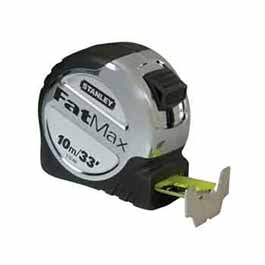
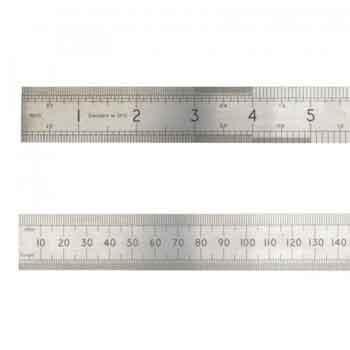


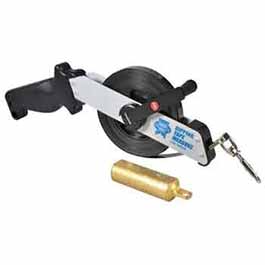
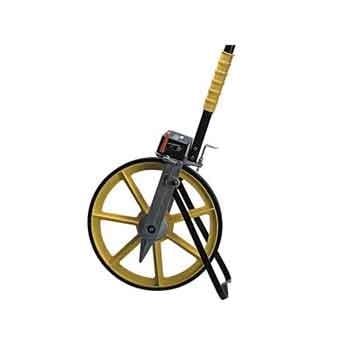

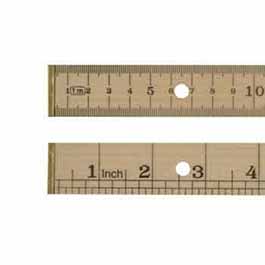

Shop our wide range of Tapes & Rules at Trading Depot. Ensure precision and reliability with tapes & Rules, essential tools for measuring in construction, carpentry, DIY projects, and more. Whether you're marking out materials, verifying dimensions, or planning layouts, these tools provide the accuracy you need for professional results. From retractable tape measures with durable housings to sturdy steel rules for detailed work, our range caters to every measuring task. Designed for durability and ease of use, these tools are perfect for both professionals and DIY enthusiasts.